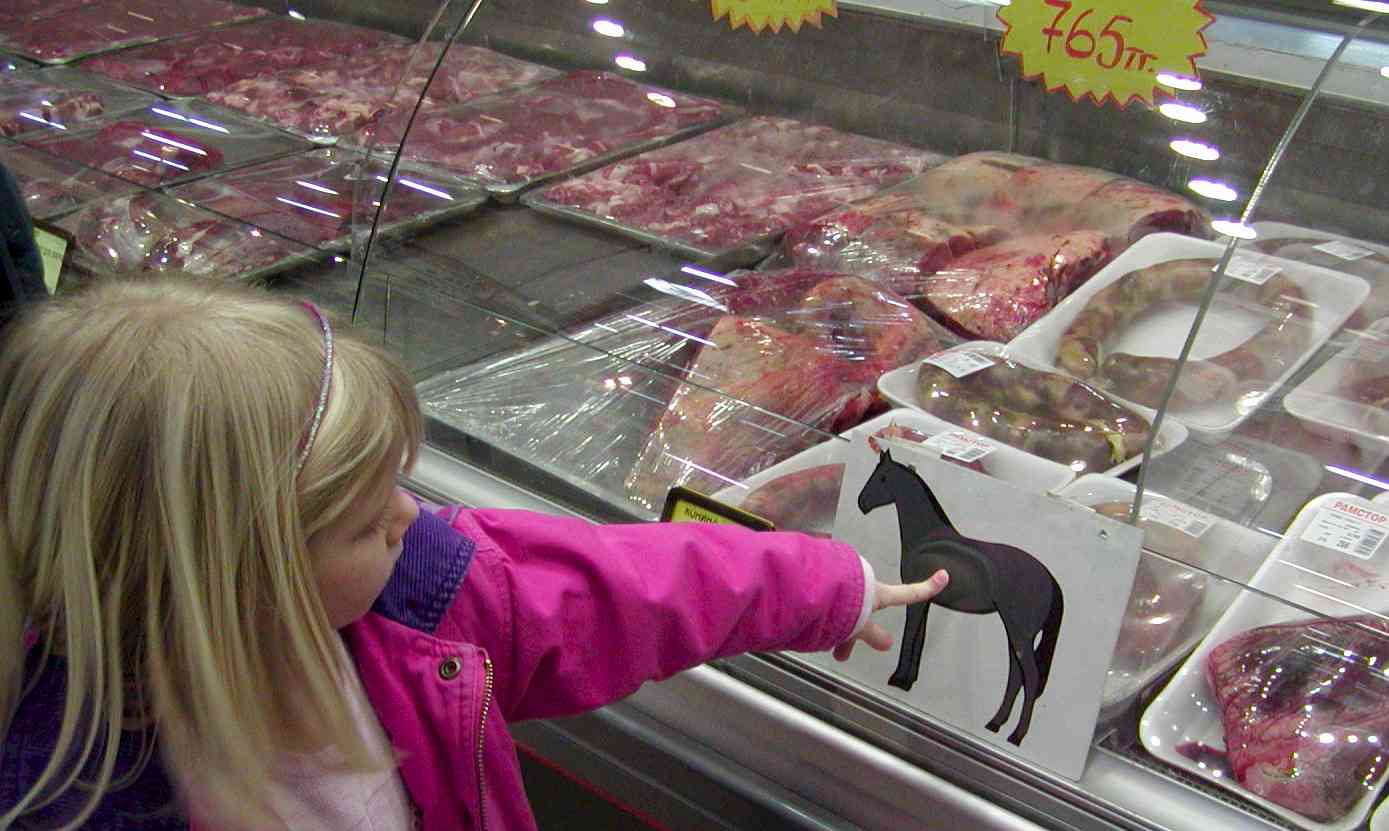In the wake of news that some in south Florida are taking to butchering horses, here are some tips from Australia on how to eat horse.
Horse Steaks
The world’s most famous horse steak eaters, the French, have only gained that reputation since the 1789-1799 revolution simply because the horses of aristocrats were an easy source of protein for a country in turmoil. Its popularity was reinforced during food shortages post World War II. Traditionally, horse meat is sold from boucheries chevalines (horse butchers), although now it can also be bought from supermarkets. In French-speaking Quebec, in Canada, horse meat is also popular (above, right, a horse butcher at the Toulouse market, 2007).
Chips Cooked in Horse Fat
Horse with Noodles
Pastissada de Caval
In northern Italy, the traditional horse meat stew from Verona known as Pastissada de caval is made with wine and paprika. Legend has it that the dish originates from the town’s inhabitants marinating the meat from dead horses in the local Valpolicella wine and herbs and spices after a battle between the Ostrogoths and Barbarians in AD489. In Italy, horse – and donkey – meat has traditionally been cured to make bresaola or carpaccio.
The Original Steak Tartare
Needless to say with horses being central to life on the central Asian steppes, so it is central to their diet. For those magnificent horsemen the Tartars, the most famous being Genghis Khan and his army, the horse was also a living meal. They would slice meat from the horses’ hindquarters for sustenance, sewing-up the wound, and continuing on their rampage. Another legend has it that the Tartars tenderized their meat under their saddles, the origins of the classic French raw meat beef dish steak tartare.
 Alcoholica Mare’s Milk
Alcoholica Mare’s Milk
This reliance on the horse on the central steppes also means a reliance on mare’s milk. Fermented, mare’s milk becomes a mildly alcoholic yoghurt-like drink known as Kumis or Airag. When visiting Mongolia in 2005 President Bush was apparently offered Kumis although there is no record as to whether or not he actually consumed it.
Horse Jerky
Commercially produced packets of horse meat jerky is an easy introduction to horse meat for squeamish tourists in Kazakhstan. For the locals though, horse flesh is a real treat and made into sausages including Kazy and the smoked sausage Shuzhuk.
Horse Sashimi
In Japan, barbecued, horse is simply called horse meat: baniku; or skewered horse: bagushi. But raw horse meat is poetic, named after its cherry-red colour and known as sakura (cherry blossom) or sakuraniku (cherry blossom meat). Sakura served sashimi-style with soy sauce and ginger is known as basashi.
